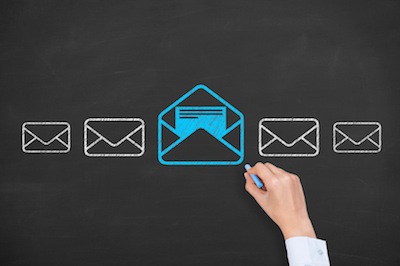Previously, I posted a blog on signature-driven emails, along with 10 tenets to follow when using them. In today’s post, I focus on one type of signature-driven email – the “fake forward.” A fake-forward email is a signature-driven email that looks as if it was forwarded to the recipient.
Previously, I posted a blog on signature-driven emails, along with 10 tenets to follow when using them. In today’s post, I focus on one type of signature-driven email – the “fake forward.” A fake-forward email is a signature-driven email that looks as if it was forwarded to the recipient. The elements of a fake-forward email include:
 Sender: From an individual (not an alias)
Sender: From an individual (not an alias)
Subject line: Prefaced by “Fwd:”
Body copy:
• Addressed to the recipient
• Formatted in text
• Forwarding line displaying the original sender’s details
• Original sender’s email can contain HTML
Anti-Fake-Forward Argument
Several marketers I have spoken with consider fake-forward emails an unsavory tactic that carries significant risk. The drawbacks they cite include:
Deception. The subject line does not accurately represent the content of the email, as the “FW:” implies that the email was specifically targeted to the individual. This tactic does not pass the “newspaper test” – if the organization’s use of this marketing tactic were publicized in a public forum, e.g. the front page of a newspaper, it would be embarrassing.
Mistargeting. Many fake-forward emails use the last date a sales representative interacted with a contact as part of the inclusion or exclusion criteria. This may be effective if all relevant sales interactions have been recorded in the organization’s sales force automation system in a timely manner. However, in most B2B organizations this is not the case, so it’s highly likely that many fake-forward emails are inadvertently sent to the wrong individual. Though mistargeting marketing messages has a negative impact, the impact of mistargeting fake-forwards is more severe.
Unprepared reps. When an individual receives a fake-forward email, he or she often calls or emails the sender. The supposed senders (often sales reps) are not always aware that these emails have been sent on their behalf, so they cannot effectively address followup questions. The result is potential risk to the relationship.
Pro-Fake-Forward Argument
Other marketers I have spoken with view this tactic as a creative approach that can increase email conversion rates. From their perspective, the benefits are:
High credibility. Since they usually know the sender, recipients tend to perceive these emails as relevant to their interests.
Similar to signature-driven emails. Fake-forward emails are similar to signature-driven emails, which are a commonly accepted marketing tactic.
Sales loves it. When executed effectively, fake-forward emails increase a customer or prospect’s perception of the degree to which the sales representative is client-focused and engaged in the account. This helps to foster goodwill and deepen the relationship.
If you have used fake-forward emails in the past – or considered using them and opted not to – I would like to know your thoughts on this tactic.
 Sender: From an individual (not an alias)
Sender: From an individual (not an alias)